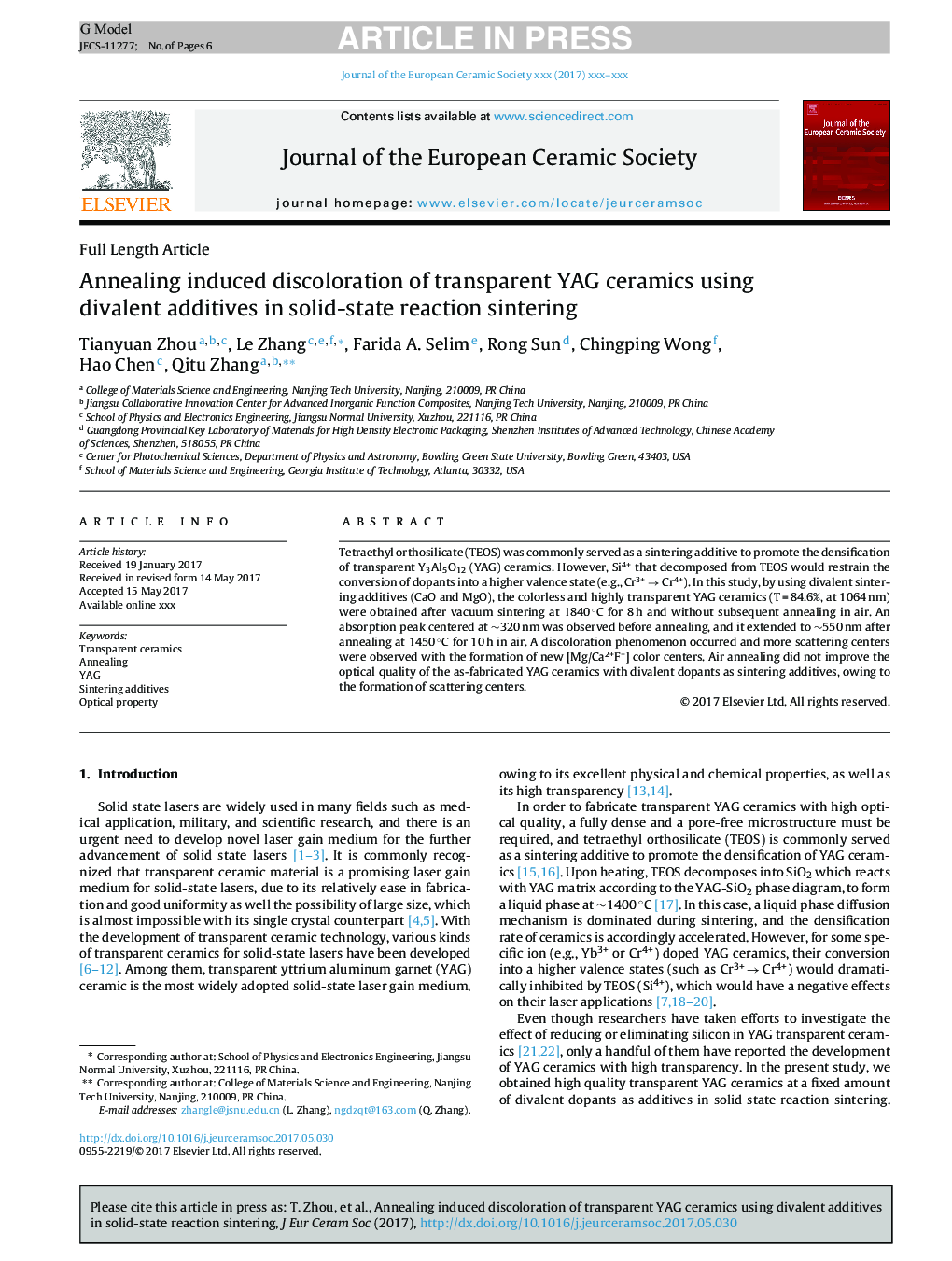| Article ID | Journal | Published Year | Pages | File Type |
|---|---|---|---|---|
| 5440448 | Journal of the European Ceramic Society | 2017 | 6 Pages |
Abstract
Tetraethyl orthosilicate (TEOS) was commonly served as a sintering additive to promote the densification of transparent Y3Al5O12 (YAG) ceramics. However, Si4+ that decomposed from TEOS would restrain the conversion of dopants into a higher valence state (e.g., Cr3+ â Cr4+). In this study, by using divalent sintering additives (CaO and MgO), the colorless and highly transparent YAG ceramics (T = 84.6%, at 1064 nm) were obtained after vacuum sintering at 1840 °C for 8 h and without subsequent annealing in air. An absorption peak centered at â¼320 nm was observed before annealing, and it extended to â¼550 nm after annealing at 1450 °C for 10 h in air. A discoloration phenomenon occurred and more scattering centers were observed with the formation of new [Mg/Ca2+F+] color centers. Air annealing did not improve the optical quality of the as-fabricated YAG ceramics with divalent dopants as sintering additives, owing to the formation of scattering centers.
Related Topics
Physical Sciences and Engineering
Materials Science
Ceramics and Composites
Authors
Tianyuan Zhou, Le Zhang, Farida A. Selim, Rong Sun, Chingping Wong, Hao Chen, Qitu Zhang,
